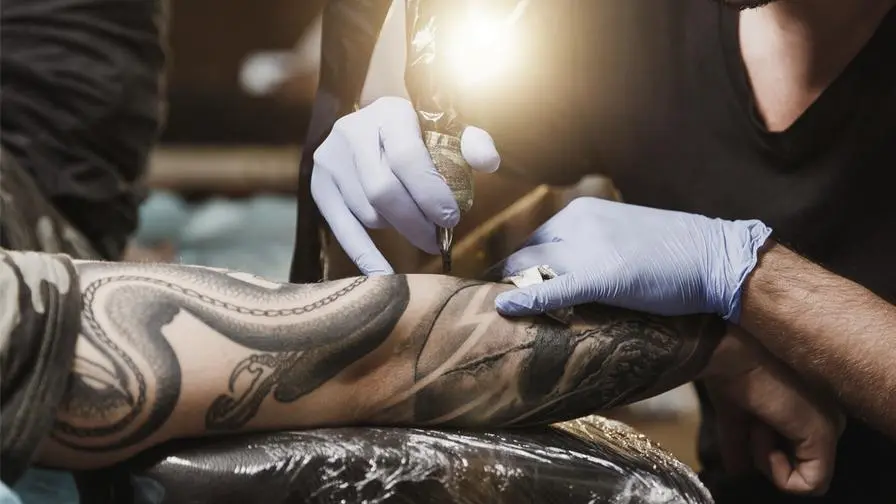Is tattooing equivalent to putting "carcinogens" into the body? Study: Risk of malignant lymphoma may increase by 21%

Tattoo culture has gradually become widely accepted by the public in recent years, and many young people use tattoos as a way to express their personal characteristics. However, research published in “eClinicalMedicine” warns that components such as primary aromatic amines (PAA), polycyclic aromatic hydrocarbons (PAHs) and various metallic substances (arsenic, chromium, cobalt, lead, nickel) in tattoo inks may cause tattoos. The risk of developing malignant lymphoma was 21% higher.
Tattoos are equivalent to putting “carcinogens” into the body? Study: Risk of malignant lymphoma increased by 21%
This research was initiated by Lund University in Sweden. The research team extracted the medical treatment data of 11,905 subjects through cancer registration data from public health units from 2007 to 2017; and selected 1,398 tattooed patients with malignant lymphoma (experimental group) and There were 4,193 tattooed people without malignant lymphoma (control group), accounting for 21% and 18% of the total tattooed population respectively.
By comparing the experimental group with the control group, the research team was able to eliminate known confounding factors such as smoking, age, gender, and socioeconomic status. After adjusting for all variables that may affect the study results, the matching analysis results preliminarily show that compared with subjects without tattoos, those with tattoos have a 21% higher risk of developing malignant lymphoma. In addition, if the period from the first tattoo to the first diagnosis of malignant lymphoma is less than 2 years, the risk of malignant lymphoma can reach 81%; as this interval extends to 3-10 years, the risk will gradually decrease until it exceeds 11 The risk will rise again to 19% after the year.
Subgroup analysis showed that diffuse large B-cell lymphoma (DLBCL) had the highest risk associated with tattoos (30%), followed by follicular lymphoma (FL) (29%). Increased risk of Hodgkin lymphoma (HL) and nonfollicular indolent B-cell lymphoma (NFIBL) among subjects with less than 2 years between first tattoo and diagnosis, but with longer exposure No significant effect was observed with time.
Does laser tattoo removal work? The risk of cancer increased by 1.63 times
It is worth mentioning that the research team further explored the correlation between “tattoo patterns” and malignant lymphoma and found:
There is no evidence that the greater the total area of tattoos on the body, the greater the risk of cancer; on the contrary, individuals with tattoos smaller than the palm of their hand have the highest risk of malignant lymphoma.
Black tattoos (23%) and colored (21%) tattoos have about the same risk of cancer; those with only black tattoos (32%) have a higher risk than those with both color and black tattoos (11%) Cancer risk.
Laser tattoo removal may increase the relative risk of cancer by 1.63 times.
Study author Christel Nielsen said the association between tattoos and malignant lymphoma may be related to the body’s response to tattoo ink. “When ink is injected into the skin, the human body will recognize it as a foreign body that should not exist and order the immune system to remove it. This process will cause the pigment of the ink to transfer to the lymph nodes, causing lymph node disease and even cancer.”
Does tattoo ink suppress immune system function? Expert: Pigment may accumulate in lymph nodes
Nielsen explained that chemicals deposited in the lymphatic system may cause damage to the body’s immune system. Past studies have pointed out that exposure to chemicals such as polycyclic aromatic hydrocarbons is related to the weakening of immune surveillance or immune suppression of cancer cells. Another study found that tattoo ink may slightly alter the mechanism by which red blood cells communicate with other cells, but it’s unclear whether this has any impact on human health.
Nielsen believes that this study is the first epidemiological study to use large sample data to investigate the relationship between tattooing behavior and malignant lymphoma. In addition, the study also fully covered the Swedish population or ethnic groups, which resulted in fewer possible variables and made the test results more precise. “However, it still cannot be concluded that there is a causal relationship between tattoos and specific cancers, and further research is needed to confirm it in the future.”
Source:
Tattoos as a risk factor for malignant lymphoma: a population-based case–control study
Immediate and Sustained Effects of Cobalt and Zinc-Containing Pigments on Macrophages
Extended reading:





